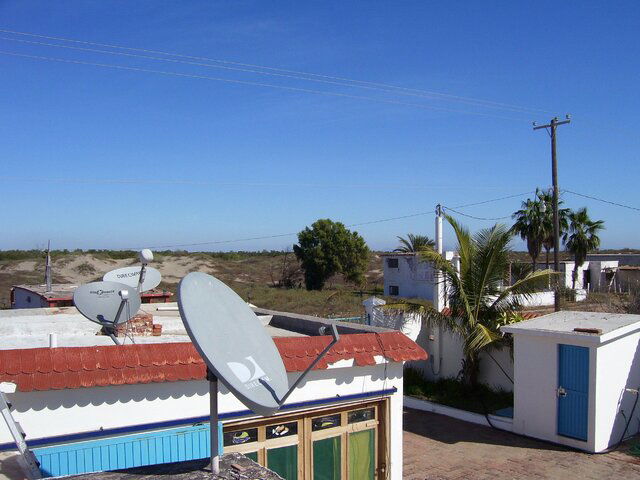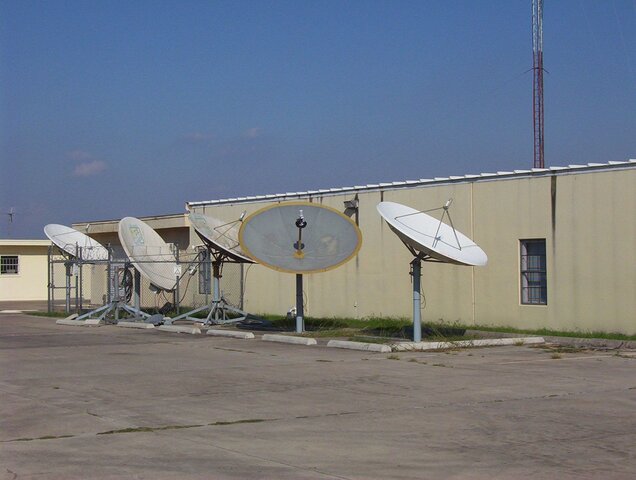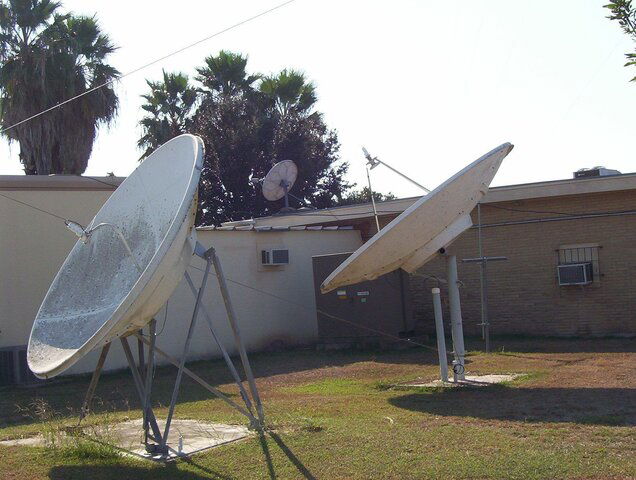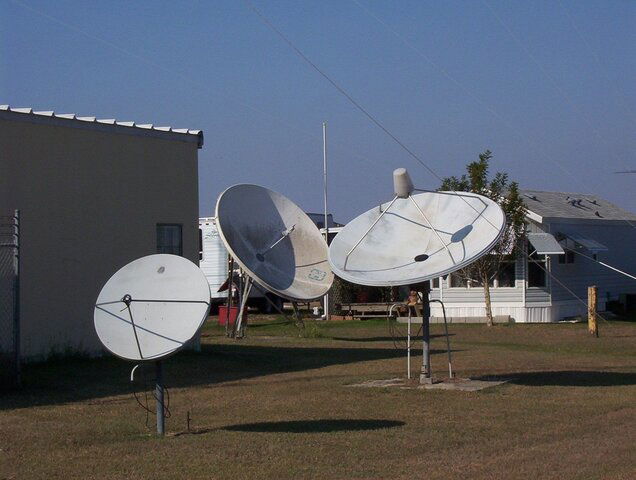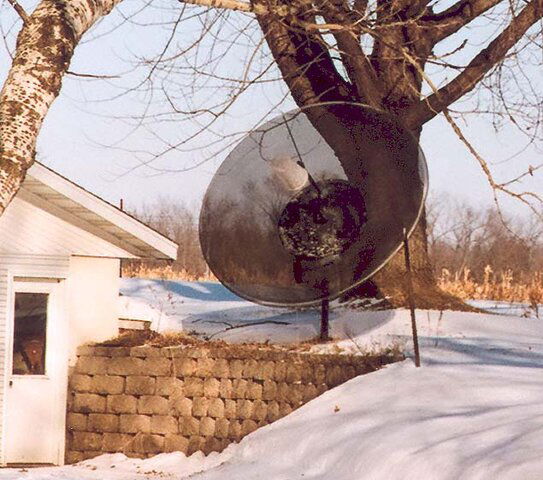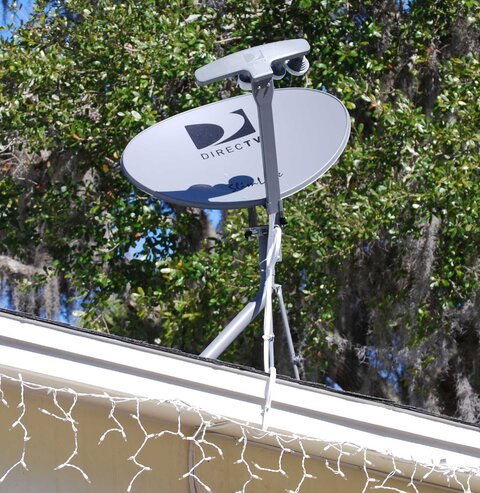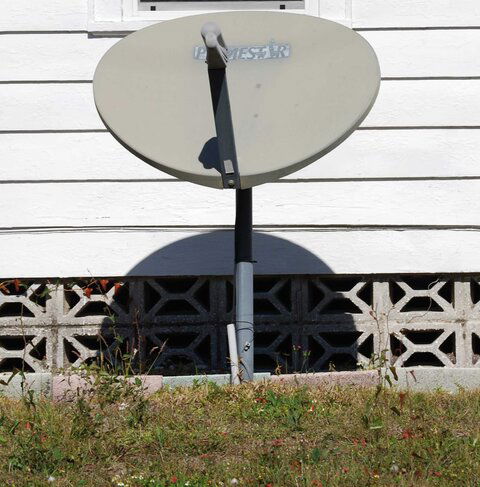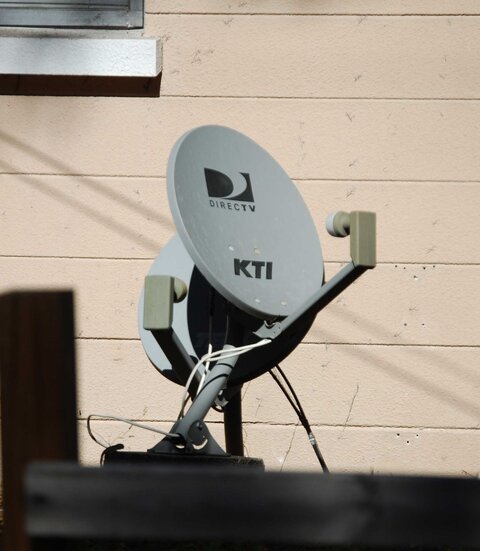Love the tree stand on the dish pole, you can take your sat meter AND the 30-06 up at the same time!
pics of the dish farm...post yours too :)
- Thread starter Mr Tony
- Start date
- Latest activity Latest activity:
- Replies 645
- Views 172K
You are using an out of date browser. It may not display this or other websites correctly.
You should upgrade or use an alternative browser.
You should upgrade or use an alternative browser.
- Status
- Please reply by conversation.
I will share with you my antenna farm in the land of the sea and sun. Located about 500 miles south of Nagalas AZ/Sonora Mx
As I set here typing this it is about 85 F. with the windows open, fan blowing and I am watching hockey in the frozen north land.
Includes Hughesnet / SC / Mexican FTA
You can also see my ham antenna
As I set here typing this it is about 85 F. with the windows open, fan blowing and I am watching hockey in the frozen north land.
Includes Hughesnet / SC / Mexican FTA
You can also see my ham antenna
Attachments
I will share with you my antenna farm in the land of the sea and sun. Located about 500 miles south of Nagalas AZ/Sonora Mx
As I set here typing this it is about 85 F. with the windows open, fan blowing and I am watching hockey in the frozen north land.
Includes Hughesnet / SC / Mexican FTA
You can also see my ham antenna
Very Nice!
I wish the DirecTV dishes that are so common around here were all as big as the one in your picture! Those would be useful for Ku-Band FTA 
This dish farm was dismantled in 2003. I still use some of the Ku dishes at my new location, but the 9' DHS spun aluminum was destroyed in transport. The large 12.5' square all steel and aluminum spherical I built in 1983. It rests on its back waiting to be returned to service, someplace someday. It was an experiment at the time, I wanted to go all metal, instead of redwood or cedar. I wasn't sure if I could get the smooth surface using my design, but it proved to be a success. I could park my pickup in front of it and still watch sparkle free pictures on Galaxy-5, using a 125 degree LNA. Even in winter, when the snow would sometimes accumulate over 3 feet from sliding off the surface, no maintenance was necessary. I had three tripod feeds and could have had many more at 2 degrees spacing. The metal mesh is 1/8 inch mesh heavy gauge galvanized, attached with 800 self-tapping screws to a horizontal aluminum lattice, welded to vertical aluminum channel that is attached by adjustable jackscrews to an angle iron frame bolted to a massive angle iron base platform. Only the angle iron has shown some surface rust over its 25 year existence. The mesh is fine, and it's proven to be impervious to hail. Sometimes birds in flight would whack into it, and once I saw a house fly with its head stuck tight in a square of the mesh, wings buzzing. Looking like a stationary model in a wind tunnel.
That was the first satellite dish I owned, at a time when it was necessary to construct your own LNA, waveguide, feedhorn, and receiver. Back when premiums like HBO were in the clear; the analogue era. Somewhere I have photos that detail my spherical dish, that when found I will share. My present dish farm has seven dishes, but is a bit smaller in size, as I rent in the city. I'll post some of those pictures later. My spherical needs to find a good home. It's been lying on its back focusing a starfield of galactic signals to multiple focal points; imagine an RF cloud layer hovering 18 feet above the dish at every possible focal point of the V/H radius. Oh well, at least the birds can walk on it now.



That was the first satellite dish I owned, at a time when it was necessary to construct your own LNA, waveguide, feedhorn, and receiver. Back when premiums like HBO were in the clear; the analogue era. Somewhere I have photos that detail my spherical dish, that when found I will share. My present dish farm has seven dishes, but is a bit smaller in size, as I rent in the city. I'll post some of those pictures later. My spherical needs to find a good home. It's been lying on its back focusing a starfield of galactic signals to multiple focal points; imagine an RF cloud layer hovering 18 feet above the dish at every possible focal point of the V/H radius. Oh well, at least the birds can walk on it now.



These are from my old place in McAllen. I miss them since I moved to Dallas. I'm working on it very slowly up here. It's been 2 1/2 years. I've got a bunch of smaller stuff but nothing mounted except the DirecTV.
I don't even remember where they all are pointing, now. The ones along the wall were 2.4 or 2.8 meter dishes. I know a couple were pointed at Galaxy III, Galaxy IV (New one) Satmex 5.
The big one at the corner of the building was a 3.8 meter pointed at Intelsat 805, IIRC. Elevation was like 13 degrees! The two around the back were 3.2 and 3.4 meters. One was pointed at AMC3. The other one got moved a lot. There's a 1.0m Channel Master on the roof.
Around the other side you can see the 3.2 that is around back. In front of that are 2.4 and 1.2 meter dishes. Next time I go down there, the 1.2 is coming back to Dallas with me. I should still have a 10 foot mesh dish there someplace if it hasn't walked off. There's also a 12 foot dish mounted on a trailer I want to bring back, but I'm not sure yet where I can park it in my back yard. My RV and my trains fill up a lot of the yard.
I don't even remember where they all are pointing, now. The ones along the wall were 2.4 or 2.8 meter dishes. I know a couple were pointed at Galaxy III, Galaxy IV (New one) Satmex 5.
The big one at the corner of the building was a 3.8 meter pointed at Intelsat 805, IIRC. Elevation was like 13 degrees! The two around the back were 3.2 and 3.4 meters. One was pointed at AMC3. The other one got moved a lot. There's a 1.0m Channel Master on the roof.
Around the other side you can see the 3.2 that is around back. In front of that are 2.4 and 1.2 meter dishes. Next time I go down there, the 1.2 is coming back to Dallas with me. I should still have a 10 foot mesh dish there someplace if it hasn't walked off. There's also a 12 foot dish mounted on a trailer I want to bring back, but I'm not sure yet where I can park it in my back yard. My RV and my trains fill up a lot of the yard.
Attachments
Trains?
Garden Railroad. Still under construction. (Like everything else)
Welcome in, show us some pics anyway. It's not a contest, just a chance to present what we have to the other members.
I wonder if that could be a birdview? I think they made some black mesh dishes but I've never seen one.
Toucan-Man;
Grab it! They are all good, either for getting signal after mounting, or for helping out brothers with damaged dishes. A lot of those parts are nearly unobtainable.
Grab it! They are all good, either for getting signal after mounting, or for helping out brothers with damaged dishes. A lot of those parts are nearly unobtainable.
thats linuxmans avatar he would be the main man that would know about it. Im guessing its a birdview or birdview clone.
Why didnt they make those in panels? that would be a big box for that mesh dish
Other then the new DTV Slimline install all these are still realics floating around my area around my house.
The one with the DTV and Primestar Dish, the DTV dish use to be mounted to the primestar dish I dont know what happened, we have had a few bad storms so it might have come undone
The one with the DTV and Primestar Dish, the DTV dish use to be mounted to the primestar dish I dont know what happened, we have had a few bad storms so it might have come undone
Attachments
- Status
- Please reply by conversation.
Similar threads
- Replies
- 21
- Views
- 1K
- Replies
- 0
- Views
- 222
- Replies
- 3
- Views
- 1K
- Replies
- 21
- Views
- 2K
- Replies
- 3
- Views
- 376



